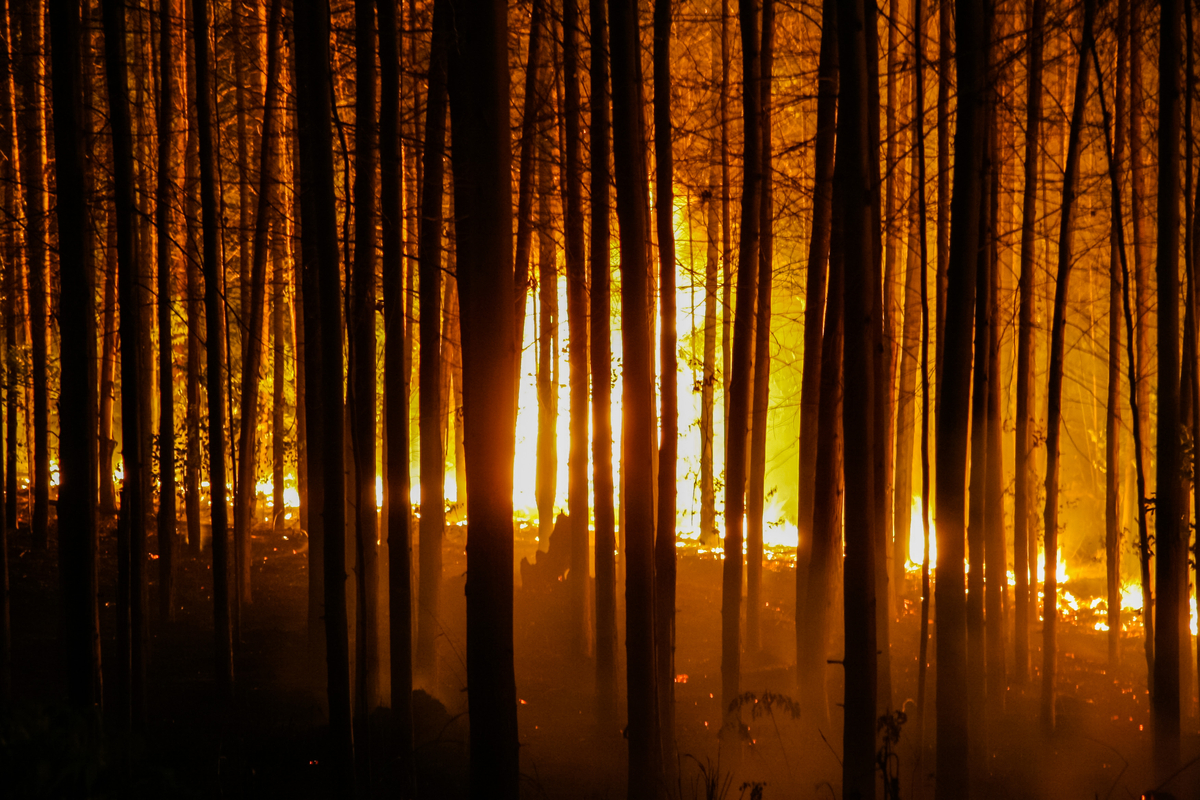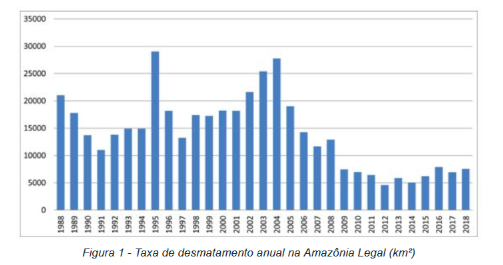Why Shouldn’t Brazil Burn Its Rainforest?
As the world turned its gaze to Brazil these last few weeks, the frenzy has reached a fevered pitch. Characterized variously as the “heart of the planet” or the “world’s lungs,” the vast Amazon is under attack by man-made raging fires to clear the forest for agriculture and cattle grazing.
The opponents of deforestation say that the fires are an attack on the planet, an attack on the natural heritage of the world’s pristine forests, and a genocidal attack on Brazil’s indigenous population — in addition to putting us all at immense risk through destroying a massive carbon sink while emitting vast amounts of CO2 into the atmosphere, exacerbating climate change.
Putting aside the obvious absurdities (Cristiano Ronaldo shared photos of a fire from southern Brazil in 2013; Madonna and Leonardo DiCaprio ushered their millions of followers into action with photos of decades-old Amazon fires), world politicians condemned the Brazilian president, Jair Bolsonaro, and blamed his policies of opening up the Amazon for having prompted these arsonists.
Many of the melodramatic claims are also incorrect or misleading: the fires appear to be clearing already-deforested fields and not to be wildly out of control; the Amazon does not supply the planet with 20 percent of its oxygen (or even 6 percent); rather, it consumes all the oxygen it produces; smoke from the Amazonian fires did not fall down as black rain in São Paolo 3,000 kilometers away. According to the BBC, meteorologists claim that residue came from entirely separate burnings much closer.
Many of the explosive numbers that are thrown around (35 or 80 percent more fires than last year, a 15, 39, 73, 88, or 278 percent increase of net deforestation) are technically correct, but highly misleading — the outcome of sensationalist journalists playing fast and loose with official statistics and cherry-picking time periods.
The massive range of the figures quoted does indicate that there’s something statistically fishy about how they were generated. A more sober assessment suggests that the number of fires is somewhat higher than last year, but in line with 2016–17 and long-run averages. Deforestation rates have seen a slight uptick over the last few years in selected states (Pará, Mato Gross, and Amazonas), but deforestation in the Brazilian part of the Amazon forest is essentially flat over the last decade — and massively down over a 30-year horizon.
At 7,500 square kilometers in 2018 (roughly the size of Delaware, or 0.2 percent of the total Brazilian Amazon forest), the amount of rainforest Brazilians are chopping down hardly amounts to an “ecocide.” A Wall Street Journal editorial offered the reasonable point that rich countries do a better job than poor countries in caring for their environment, noting the long-standing truth that left-leaning environmentalists never want to face: “wealth overcomes ‘climate change’, so the solution would be to make everyone wealthy.”
Instead of reproaching politicians, sensationalizing the news, or projecting imminent environmental disaster, let’s consider the more intriguing question: maybe Brazil should clear more of its rainforest rather than less?
Brazil is a comparatively poor country, and the North, the region where the Amazon forest is located, even more so, comparable to countries like Albania, Namibia, or Iraq — in contrast to the emerging middle class standards of southern Brazilian states like São Paolo or Rio de Janeiro. It is an overall resource-heavy economy, where more than half of its exports consist of raw materials.
Transforming relatively unproductive rainforest land into relatively more productive agricultural land would improve the livelihood of some of Brazil’s poorest people — indeed, this is the primary reason they are doing what they’re doing. Indeed, why would we not want people to take advantage of a major asset at their doorstep, an asset that may fuel their growth and transition into a richer life?
The Swedish Lesson
Today, few people think of Sweden as a raw material–exporting developing country. Its endless pine forests, together with those of its Norwegian and Finnish neighbors, reach way into the Arctic wilderness. Even today it is a much more forested country than Brazil and has a thing or two to say about successfully preserving and developing its forests.
In the 1870s, half of its exports consisted of timber — a more dramatic share than Brazil’s more diversified raw-materials industries — and it made up a larger share of its GDP than forestry and agriculture does in Brazil today. Since the explosive growth of lumber and sawmill industries at the turn of the last century, the volume of Swedish forests has increased by at least 80 percent. Only about 0.3 percent of the Swedish forest remains untouched, ancient forest, but nobody in their right mind would say that the logging and profit-driven management of the rest of Sweden’s vast forest has been an environmental disaster for the Scandinavian peninsula.
Here’s the secret: the vast majority of Sweden’s forests are privately owned, privately managed — and sustainably cultivated. Only 3 percent is owned by the government (another 14 percent is owned by a government-owned corporation, run like any other profit-seeking business), and most of that for national-heritage reasons and located in remote, inaccessible mountain regions. Indeed, Sweden’s forests have grown in size and volume as the country grew richer and its economy transitioned into other industries. Since 1975, when its per capita GDP rivaled Brazil’s today, net reforestation rates have reliably been around 3–4 percent.
In contrast, about 40 percent of the Amazon forest is protected land, either allocated to indigenous tribes or under doubtfully enforced public conservation. Around 35 percent is privately owned, either as legally registered property or as possession under Brazil’s infamously complicated land-tenure laws. The rest, about one-quarter of the Amazon forest, is unowned, unallocated public land. Nobody familiar with Hernando de Soto’s famous Mystery of Capital is at a loss to understand why this is a problem.
Nor does private ownership of the commons come as a surprise to researchers of the Amazon; they have loudly voiced that opinion for years. For instance, Professor Brian Robinson of McGill University and colleagues at the University of Wisconsin-Madison concluded in a meta-study of deforestation and forests from a couple of years ago that “public land seems to be particularly vulnerable to negative forest outcomes in South America.” Two Brazilian researchers at the Economics Institute at the State University of in Campinas Brazil have concluded the same thing: “The deforestation occurs mainly because property rights are not clearly established, and occurs on land directly or indirectly related to the state.”
Conclusion
Facts and reality have never been the green movement’s strong suit, and it has consistently operated on emotions, scare tactics, and worst-case-scenario catastrophizing. Yes, there are fires raging in parts of the Amazon. Yes, in parts of this vast rainforest the deforestation rates have risen slightly after some years of remarkably low clearing. The hysterical environmental response we are seeing is, as usual, massively exaggerated.
It is far from obvious that clearing Amazon rainforest is a bad idea; indeed, at this stage of Brazil’s development, it is hardly unreasonable to say that they ought to convert more rainforest into agricultural land. Ninety percent of the world’s deforestation happened before 1950, and the World Wildlife Fund target of zero net deforestation looks like it will be met next year. Forests can be replanted, and they overwhelmingly are — once countries grow richer, and once we’re past “Peak Farmland.” If Simon Kuznets’ famous curve ever applied to anything, deforestation seems like a prime candidate.
The Swedish story of forestry offers some insights for Brazil’s forestry. Private enterprise, with secure private property, combines flourishing industry with long-term sustainability.
Captain Chainsaw is by no means a balanced and thoughtful leader, and Brazil struggles with many political and economic problems. Still, the issue has a fairly simple solution: private property rights. Sweden’s forests send their flourishing regards.












